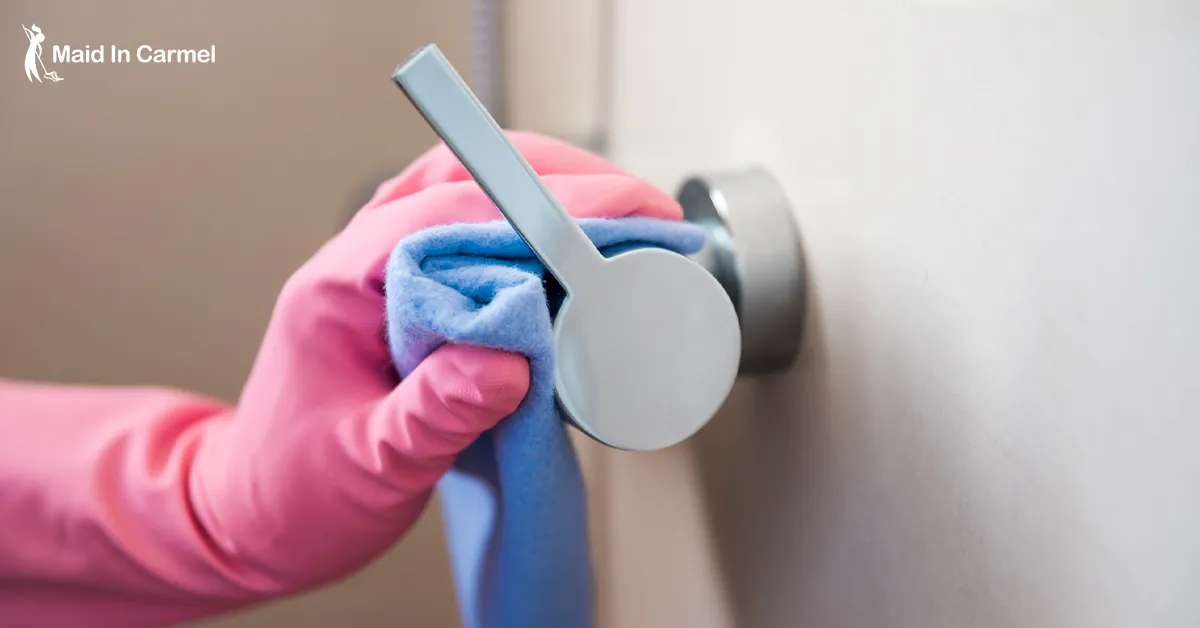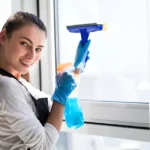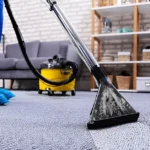The Restroom Cleaning Checklist gives complete instructions for preserving immaculate restroom conditions. CleanUpMax provides a sanitation program that contains both standardized cleaning methods as well as required tools, while offering advanced cleaning solutions for deep disinfection work alongside odor control methods. These practices, when implemented together, manage to guarantee constant high levels of hygiene, which leads to satisfied users. Any commercial property should keep its restroom facilities always in splendid condition as part of property management operations.
Systematic restroom cleaning along with specialized expertise requires regular best-practice implementation for providing hygienic areas that users need. The complete directive delivers facility managers and cleaning experts, along with business owners, an extensive restroom cleaning checklist that includes daily routines alongside quarterly extensive cleaning procedures. Your establishment will achieve truly sanitary conditions for its users through the implementation of these standards.
The following detailed guide presents an effective method to establish such practices:
Understanding the Importance of Restroom Hygiene
A clean restroom environment remains essential to health and safety because poor sanitary conditions let pathogens spread freely without proper cleaning procedures. The prevention of illness depends absolutely on effective deep sanitization and disinfection services. The attention to these practices helps maintain supervisory standards while making users satisfied with the facilities.
Health and Safety Considerations
Proper maintenance of restrooms fails to prevent the quick formation of dangerous pathogens that can spread throughout the area. Multiple disease-related germs found in public restrooms consist of both bacteria and viruses, along with fungi. Deep sanitization methods must be employed to remove health risks that stop the transmission of illnesses between users in facilities. The continuous application of disinfection services maintains a crucial defensive position, which disrupts infection transmission across high-traffic commercial facilities.
The consequences of dysfunctional bathroom maintenance affect individuals’ health throughout an extensive duration. Research indicates that eight out of ten consumers will avoid restaurants possessing unclean restroom facilities, thus showing that restroom cleanliness directly reflects a business reputation. Scientific cleaning protocols used in professional services eliminate visible contaminants and unseen pathogens to produce sanitation instead of cosmetic cleanliness.
Impact on User Perception and Business Reputation
Your restroom condition stands as an important factor that determines how customers view your entire business organization. The implementation of deep cleaning protocols shows your dedication to user comfort and safety, which turns into a strong first impression for visitors. Hygiene-oriented maintenance programs installed in facilities demonstrate equal treatment toward both the customer base and staff personnel.
Workplace satisfaction and productivity directly result from restroom cleanliness, according to modern cleaning approaches used in offices. Workers in buildings with properly maintained washrooms exhibit increased workplace satisfaction and experience diminished employee illnesses. The emphasis on restroom cleanliness creates a strategic business move that protects customer retention while improving employee health beyond operational spending.
Essential Supplies for Effective Restroom Cleaning
An effective restroom cleaning process depends on using suitable supplies in all settings. The cleaning process requires hospital-grade disinfectants and odor-control enzymatic cleaners, which enable proper toilet and sink cleaning practices. The essential supplies are necessary prerequisites to keep hygiene standards intact.
Cleaning Agents and Solutions
The proper selection of cleaning agents represents a requirement to carry out adequate toilet and sink cleaning operations. A successful restroom cleaning system contains various essential components that deliver effective outcomes.
- The hospital-grade disinfectants possess certification to successfully eliminate 99.9% of all germs.
- Acid-based cleaners serve to remove mineral deposits as well as scale accumulation.
- Non-abrasive surface cleaners for porcelain and countertop materials
- Glass cleaners for mirrors and partitions
- Enzymatic cleaners for organic matter and odor control
The present trend in sustainable facilities includes using environmentally responsible cleaning solutions that offer strong performance without toxic ingredients. The green cleaning products enable effective sanitation treatments while protecting both the environment and offering better air quality to cleaners and restroom visitors.
Tools and Equipment
Professional-grade cleaning tools raise the effectiveness and performance quality of typical cleaning activities. Essential tools include:
- Professional-grade microfiber cloths have colors that designate which surfaces they should be used on to prevent contamination between areas.
- Jane Miguels offers adjustable extension handles designed for cleaning higher surfaces, together with restricted areas.
- Two-compartment mop buckets provide separation between clean water in one chamber and dirt-infested water in the other compartment
- The establishment requires safety signage together with wet floor markers for visual warnings.
- Quality squeezers for glass and mirror surfaces
- Toilet brushes that function with enclosed holders serve the designated purpose of cleaning the toilet area.
- Grout brushes for tile areas
- HEPA-filtered vacuum for removing debris
A specialized set of equipment becomes essential for industrial-grade manufacturing environments that need to confront challenging cleaning tasks. Plus steam cleaners and pressure washing systems, these facilities possess advanced deep cleaning equipment that focuses on heavily soiled areas.
Personal Protective Equipment
Cleaner safety should be the main focus of all cleaning operations. Proper commercial restroom cleaning procedures must include protective gear that suits the specific needs of the cleaning tasks.
- Chemical-resistant gloves
- The use of protective eyewear becomes essential for chemical work situations that involve splashing liquid.
- Moisture-resistant footwear
- Safe breathing devices must be worn while cleaning with potent cleaning agents.
- A distinct set of cleaning attire must be used to stop contamination from spreading.
Facilities receive comprehensive protection from cleaning staff equipment, which simultaneously helps operational hygiene maintenance. Professional cleaning services start every restroom sanitation project by implementing safety measures as part of their complete sanitation process.
Comprehensive Restroom Cleaning Checklist
Keeping restroom hygiene standards requires the execution of daily, weekly, and monthly cleaning operations that appear in an all-inclusive checklist. The daily cleaning schedule concentrates on cleaning toilets and sinks, while weekly activities require deep sanitation of toilets and urinals. The schedule of monthly operations handles difficult cleaning procedures, including grout maintenance as well as descaling tasks.
Daily Maintenance Tasks
Efficient restroom hygiene depends on daily maintenance activities, which serve as its base foundation. The daily inspection must contain these essential items:
- All waste containers need emptying, followed by sterilization procedures.
- The restroom should receive new supplies of paper and hand soap items.
- Regular staff members must perform disinfection and cleanliness duties on all toilets and urinals throughout the day.
- Staff should clean all surfaces, including sinks as well as countertops, together with faucet areas.
- Clean mirrors and glass surfaces
- Time should be spent using cleaning products to treat walls together with stall partitions, and doors.
- The use of disinfectant solution should cover floor sanitizing through sweeping and mopping operations.
- Check and clean air fresheners and odor control devices
- The establishment should inspect plumbing systems to identify potential issues requiring attention.
- The cleaning staff should implement disinfection treatment on all surfaces that people touch frequently, including doorknobs, flush handles, and light switches.
Frequent implementation of these tasks stops the accumulation of soil and contaminants and ensures a strong hygiene level. Professional cleaning crews conduct these cleaning tasks numerous times every day in public places they service while maintaining documented records to verify their work.
Weekly Cleaning Procedures
The cleaning program includes deep weekly services to maintain areas that demand less daily care.
- Deep-clean toilet bowls and urinals with appropriate disinfectants
- Professional staff need to clean and disinfect all stall partition surfaces, including top and bottom surfaces.
- Regular cleaning of baseboards, together with dirty spots located in corners, will be performed.
- Dust vents and light fixtures
- Regular cleaning teams must perform a disinfection of higher and hidden areas behind toilets.
- Keep building up from blocking faucets and showerheads by running a descaling process.
- Apply floor treatments as needed
- Develop a complete method to deep clean waste receptacles until they are free from all germs.
- Regular cleaning and inspection of drain pipes must be performed to avoid bad smells.
- Repeated inspections should happen to detect maintenance problems that need immediate resolution.
The weekly cleaning processes integrate with daily housekeeping activities to stop the formation of severe cleaning concerns. Extra time required during deep sanitization leads to lasting facility standard maintenance results.
Monthly Deep Cleaning Protocol
Multiple cleaning protocols exist for intensive disinfection requirements that run monthly.
- Clean walls from top to bottom with appropriate disinfectants.
- The maintenance staff should execute a process to deep clean the grout on tiled surfaces.
- Complete descaling procedures should include attention to both toilet and urinal water jets.
- A careful review of ceiling vents must be performed to check for the amount of dust buildup.
- Installation of new shower curtains or thorough washing must be performed if existing curtains need replacement.
- Clean light fixtures thoroughly
- Machine-scrub floors with an appropriate cleaning solution
- Surface protectants need to be applied according to requirements.
- Regular checks must be conducted to identify and perform necessary repairs on caulking that presents damage.
- Inspect and clean plumbing traps
Professional disinfection services use these monthly protocols to protect the facility structure while stopping long-term issues from developing in restroom facilities. The majority of restroom cleaning programs conduct their intensive cleaning services outside regular business hours to keep operations running smoothly.
Quarterly or Seasonal Tasks
Some cleaning operations need a seasonal focus for effective completion.
- Check and clean exhaust fan motors
- Staff should examine and perform cleaning duties at the rear section of stationary plumbing fixtures.
- Clean light diffusers thoroughly
- Enzymatic cleaning agents should be used to perform deep-drain floor maintenance.
- Pressure wash or steam clean the ceramic tile and grout
- Check ceilings for mold or water damage
- The facility should inspect and clean all water supply lines.
- Test emergency fixtures if applicable
- Specialists should execute deep cleaning operations on air duct systems that service the restroom.
- Inspection of the overall facility state helps define necessary renovation and repair requirements
These detailed evaluations enable professionals to detect upcoming concerns that otherwise might become more serious problems. Office cleaning providers execute deep cleaning procedures throughout facility maintenance periods so they can perform thorough work without interrupting business operations.
Professional Cleaning Techniques
Professional cleaning techniques require cutting-edge techniques that deliver complete sanitization and the highest level of hygiene. Electrostatic spraying alongside UV-C light treatment delivers full-scale disinfection and steam cleaning, which focuses on treating porous materials. Proper germ elimination relies on scientific cleaning protocols that include these methods as essential elements in deep cleaning strategies.
Effective Sanitization Methods
Professionals perform sanitization duties that aim to kill pathogens even at microscopic levels. Effective techniques include:
- The proper cleaning and disinfection practice follows soil removal as the first step before germ elimination through disinfectants
- The electrostatic spraying method enables proper disinfectant distribution over surfaces.
- UV-C light treatments for supplemental air and surface disinfection
- Professional steam cleaners address both porous materials as well as grout lines.
- Quaternary ammonium compounds serve as broad-spectrum agents to destroy a wide range of germs.
Scientific guidelines require deep cleaning methods to include proper exposure to disinfectants according to established standards. The utilized methods guarantee true disinfection rather than visual cleanliness, which stands as a core principle of professional cleaning services.
Odor Control Strategies
An effective odor control strategy deals with the underlying causes of bad odors instead of using temporary masking solutions.
- Special enzymatic solutions decompose odorous organic materials on surfaces.
- The correct system for maintaining ventilation should remove moist air.
- Proper air freshening systems should be strategically located throughout different areas
- The use of bio-enzymatic solutions treats drains and plumbing systems alongside other similar products.
- Expert solutions exist for treating porous materials where smells persist
The manufacturing environment encounters special odor control difficulties that need robust industrial-level solutions. Cleaners that address odors work directly with standard cleaning procedures to build a complete method for keeping restrooms odor-free.
Cross-Contamination Prevention
Preventing cross-contamination requires systematic approaches:
- The cleaning materials receive color tags that correspond to their specific usage area.
- Cloudy objects must be cleaned before objects that remain dry, and only after spaces that remain wet.
- Regular disinfection of the cleaning tools themselves
- The correct handling together with the disposal of dirty objects
- Restroom cleaning equipment must always remain separate from the tools that serve other areas in the building.
Commercial restroom cleaning protocols put forward these contamination prevention measures to strengthen hygiene standards as part of their protocols. The scientific delivery methods used by professional cleaning providers serve as the hallmark of these services.
Specialized Approaches for Different Facilities
Every establishment requires special cleaning methods that match its specific requirements. The cleaning schedule priority for commercial establishments runs alongside durable equipment, whereas office cleaning requires techniques that maintain a quiet work environment. Industrial-grade solutions form essential requirements for premises that need to clean heavy materials in their manufacturing areas.
Commercial Facility Considerations
Commercial facilities present maintenance challenges because they have large numbers of visitors, along with multiple user types. Effective approaches include:
- Cleaning staff should perform their tasks at higher frequencies during operational hours.
- Higher durability cleaning tools and equipment
- Touchless maintenance of fixtures helps lower the risks of spreadable contaminants.
- Strategic scheduling during lower-traffic periods
- Documentation systems for compliance and quality assurance
The cleaning approach for janitorial teams depends on the type of facility combined with usage patterns and individual client specifications. The specific approach has proven to produce consistent outcomes in demanding conditions in high-volume spaces.
Office Environment Protocols
Caring for office restroom spaces demands cleaning methods that uphold hygiene standards while allowing people to carry out their work activities.
- The facility undergoes cleaning operations scheduled during low-traffic periods of the day
- Quiet cleaning techniques and equipment
- Enhanced focus on odor control for shared professional spaces
- The strategy focuses on relevant elements that affect employee comfort and workplace impressions.
- Office personnel should conduct regular stock checks to ensure supply adequacy, which prevents supply shortages.
The current office cleaning system blends perfectly into workplace wellness plans because restroom hygiene directly impacts both employee health and productivity and office environment quality.
Industrial Setting Requirements
The specific requirements of manufacturing facilities involve:
- Removing industrial soils and contaminants
- The implementation of safety protocols needs attention for chemical storage facilities, along with their safe usage operations.
- Cleaning teams need to manage their operations to work within the planned production timelines.
- Ensuring compliance with industry-specific regulations
- Implementing specialized waste handling procedures
Additionally, deep cleaning facilities in these environments demand industrial-grade solutions together with specialized equipment for heavy-duty work requirements. Professional cleaners need to master both cleaning science principles and relevant industry standards to provide successful service.
Maintaining Consistent Hygiene Standards
The achievement of constant hygiene standards depends on extensive training and constant quality assurance systems. Random inspections of disinfection services combined with proper training of staff yield effective protocol implementation. The method enables continuous enhancement of cleaning protocols.
Staff Training and Protocol Compliance
Through proper training, staff members can implement cleaning protocols correctly throughout all operations.
- Comprehensive initial training for all cleaning personnel
- Regular refresher courses on new techniques and products
- Clear documentation of procedures and expectations
- Certification programs exist for cleaning professionals to complete specialized tasks
- Performance evaluations and quality checks
Professional cleaning services spend money on continuous training to stay experts and adjust to emerging best practices. Professional development programs of healthcare organizations lead to better hygiene maintenance and cleaning performances.
Quality Assurance Measures
A verification system exists to verify that cleaning standards uphold their intended quality standards.
- Members of staff check facilities using standardized assessment tools during scheduled inspections.
- The scientific use of ATP testing allows organizations to verify the sanitization effectiveness of surfaces.
- Blacklight equipment enables the detection of organic materials remaining on surfaces.
- Documentation and tracking of cleaning completion
- Customer feedback collection and responsive improvement
Objective quality control procedures confirm that disinfection services meet pre-established standards and detect ways to enhance cleaning protocols continuously.
Documentation and Scheduling Systems
Comprehensive documentation supports consistent implementation.
- Schedules for comprehensive cleaning operations include specific responsibilities for each task
- Digital tracking systems for completion verification
- The documented inspection records track the status of all equipment and facility fixtures.
- Incident reporting protocols for special cleaning needs
- Supply inventory management systems
The documentation systems implemented by commercial cleaning operations help create accountable conditions that support standardized facility maintenance practices. The documentation system provides processors with valuable information that supports both improvement projects and regulatory compliance needs.
Conclusion
A detailed restroom cleaning checklist brings extensive advantages to every facility, regardless of its type. The systematic methods develop spaces that execute organizational targets through both superior user experiences and defense of health and safety. The protocols established in this guide will lead to facility maintenance excellence when conducted by internal staff or through professional service agreements.
Maid In Carmel dedicates itself to providing customized cleaning solutions that help maintain pristine restrooms for your facilities. Your organization needs new protocols to evolve its restroom cleaning procedures. Talk to our professional team now to receive tailored assessments that both improve your standards and defend your investment value.




